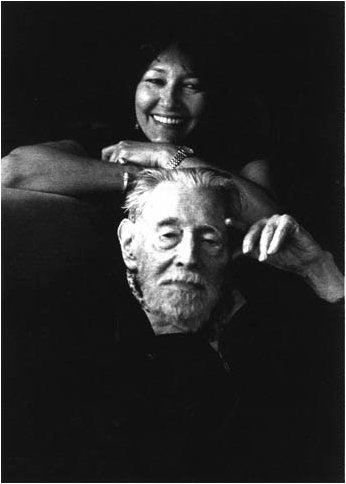|
Liborio Justo Monica Justo
There were some 30 vintage pictures, many contact prints and approximately 200 negatives. My father told me he meant to use those photographs for a book he intended to write about the Great American Depression when returning to Argentina; however, once in Buenos Aires, he was completely absorbed by the more immediate reality of Latin American politics, cause to which he dedicated all his long life, both through his political militancy and his writings on Argentine and Latin Anerican history. And so it was that he closed in his mind the chapter of his life entitled "USA and New York photos" . I decided to take the prints to London, where I have been living for more than 30 years. I showed them to various galleries and to photographers close to me. The Photographers Gallery and, particularly my friend, Zelda Cheattle, owner of one of the most prestigious galleries in London, suggested I should take the pictures to New York, specifically to the Howard Greenberg Gallery, which specializes in 30's and 40's photography . And so I did. Howard Greenberg was very enthusiastic about the photographs: although there are a great number of testimonies of the Great Depression taken by American photographers, my father’s pictures were most unusual because they were a foreigner's -an Argentine's- vison of that great catastrophe. Meanwhile, in 1985, Teresa Anchorena offered us the chance to hold an exhibition at a space in the Galeria Pacifico which belonged to the Argentine Ministry of Culture. . The exhibition was very successful. Renowned photographers such as Anne Marie Heinrich, who had photographed my father several times, congratulated him for his pictures. He was very happy: at the age of 83, a forgotten aspect of his work had been acknowledged - political activist, writer, historian, but also a photographer. In 1993, the Howard Greenberg Gallery held an exhibition entitled “New York in the 30's”, where my father’s pictures were shown together with those of Berenice Abbot and two other photographers. The vintage prints began to sell at a very good price but rather slowly. My father, now 99 and with scarce financial resources, decided to sell them all. Howard Greenberg made him an offer and he accepted it. He knew he would not live much longer, and his dearest wish was to republish before his death a second edition of “Pampas y Lanzas” (Pampas and Spears), one of his historical books, out of print for many years. And so it was that the vintage prints were sold, although I kept all the negatives, from which I made new copies both in London and Buenos Aires. I regret that my father is no longer with us, because I am certain he would have been extremely pleased with the exhibition that the Isaac Fernandez Blanco Museum has now organized –with its habitual professionalism– in collaboration with the Howard Greenberg Gallery about his work and those "really nice" New York photos which had remained buried for more than fifty years in the precious old wooden trunks where he kept poetry from his youth, manuscripts , correspondence and Trotskyite publications, silent testimonies of his long and prolific life. |
 More than once, I had heard my father talking
about some “really nice” photographs he had taken in New York, but it was
only in the early 80's that, going through his archive, I saw for the
first time the prints he had had enlarged in 1934. I found them extremely
interesting from a social and political point of view –which was
undoubtedly his fundamental approach to his photography– but above all
artistic, aspect which I knew he considered much less important.
Furthermore, the pictures showed a highly radical, humane, caring and
socially aware United States: in other words, a totally unrecognizable
USA....
More than once, I had heard my father talking
about some “really nice” photographs he had taken in New York, but it was
only in the early 80's that, going through his archive, I saw for the
first time the prints he had had enlarged in 1934. I found them extremely
interesting from a social and political point of view –which was
undoubtedly his fundamental approach to his photography– but above all
artistic, aspect which I knew he considered much less important.
Furthermore, the pictures showed a highly radical, humane, caring and
socially aware United States: in other words, a totally unrecognizable
USA....